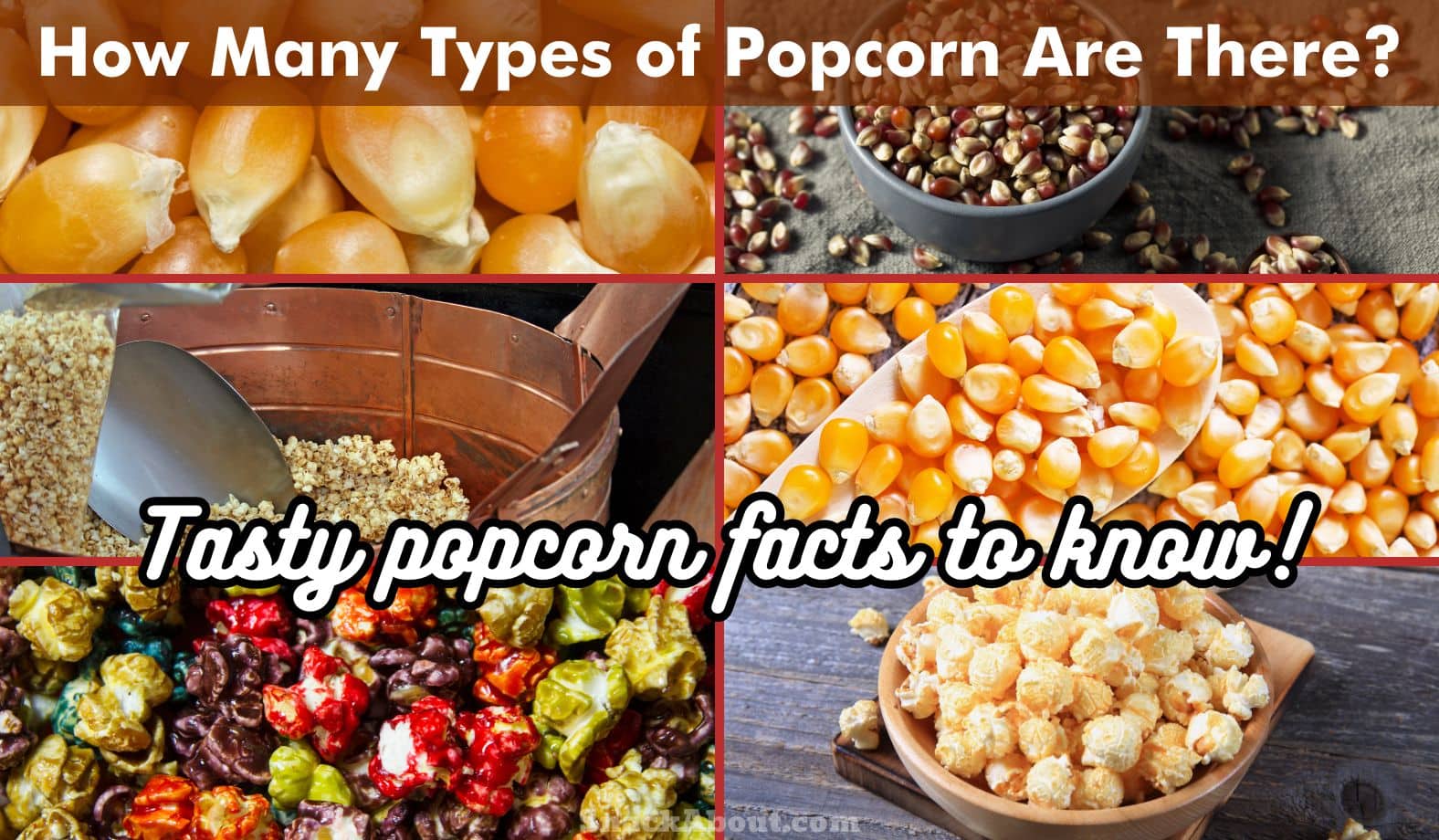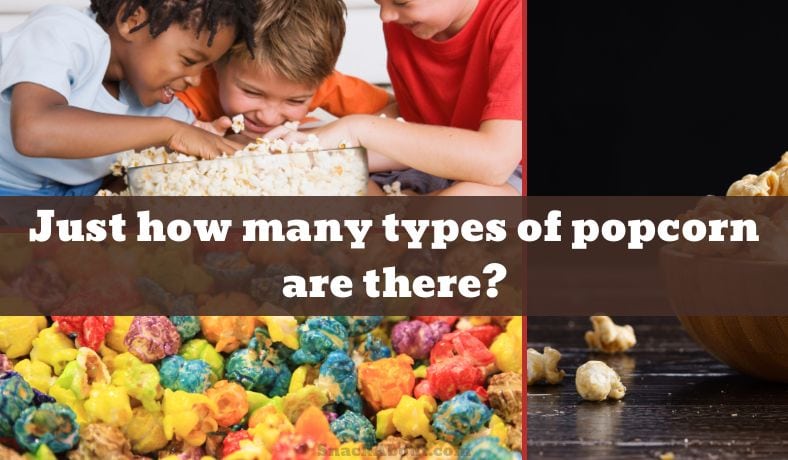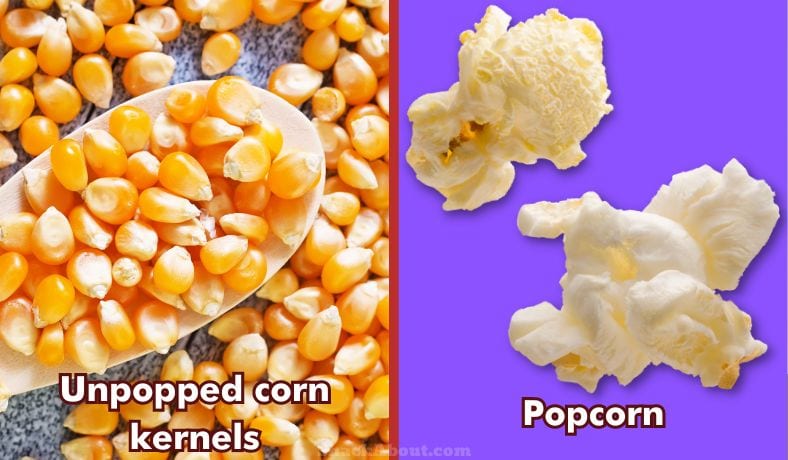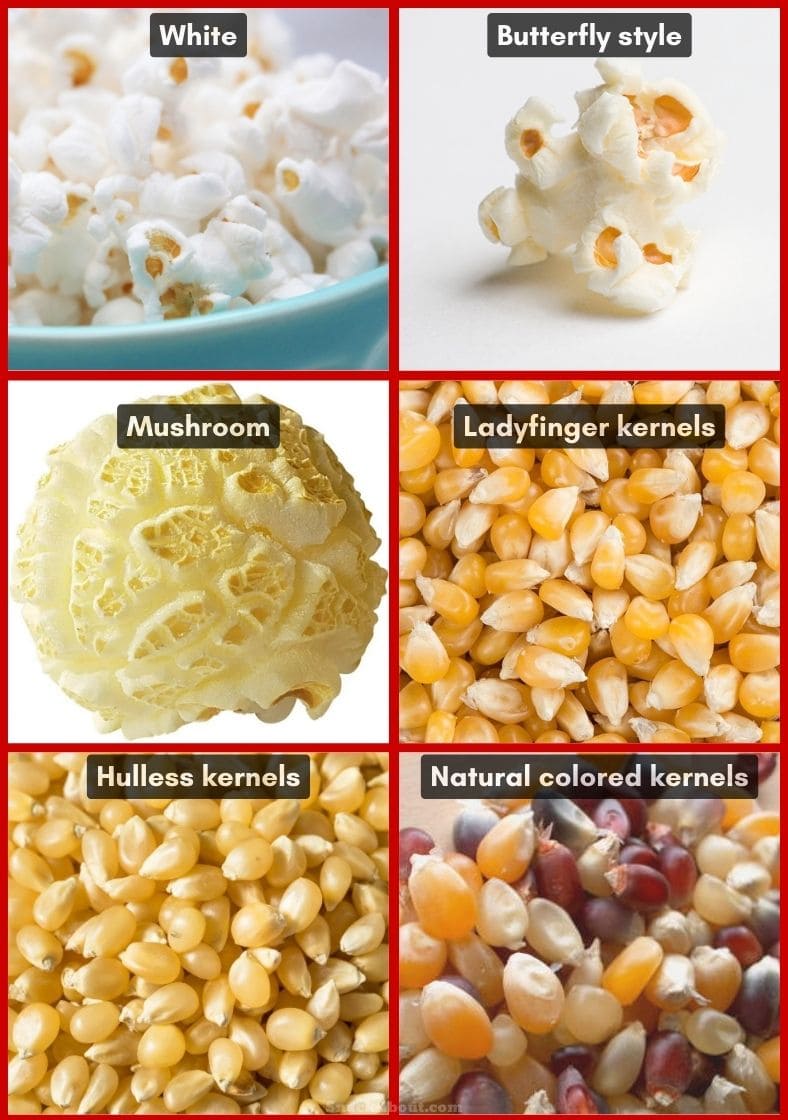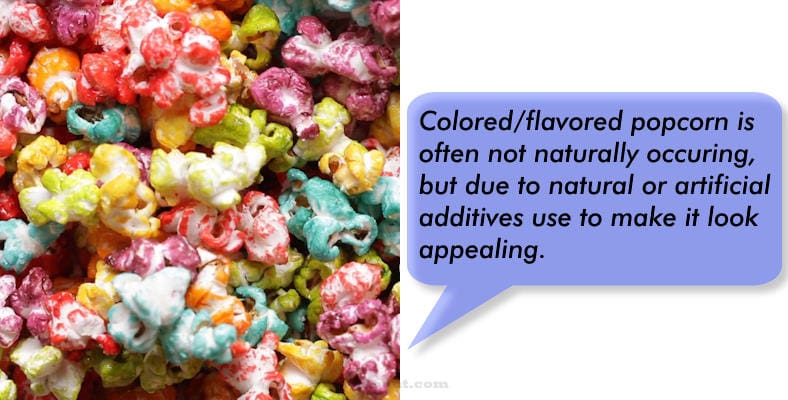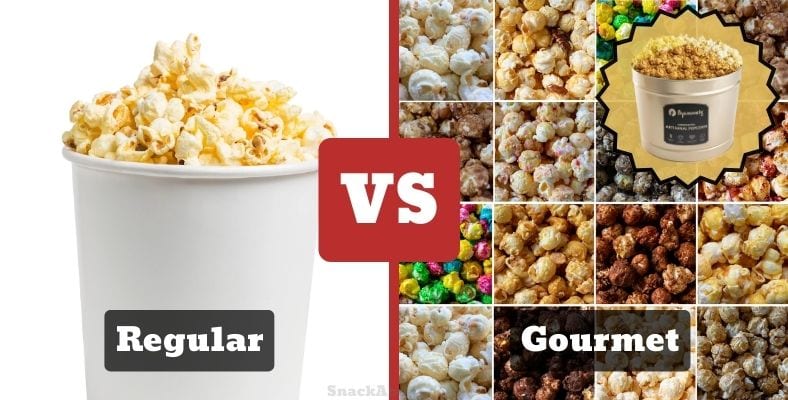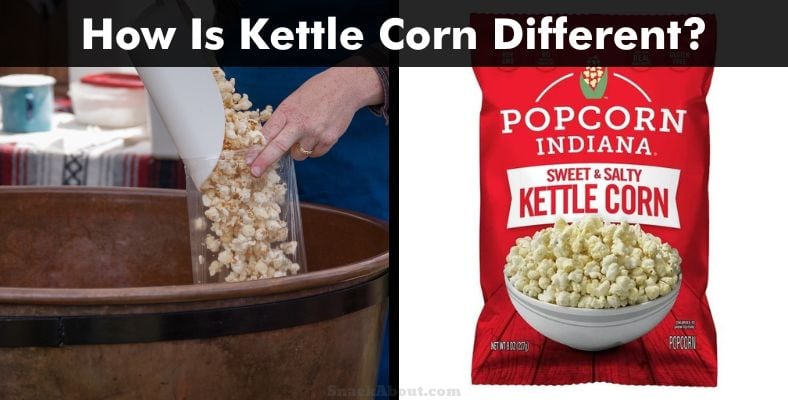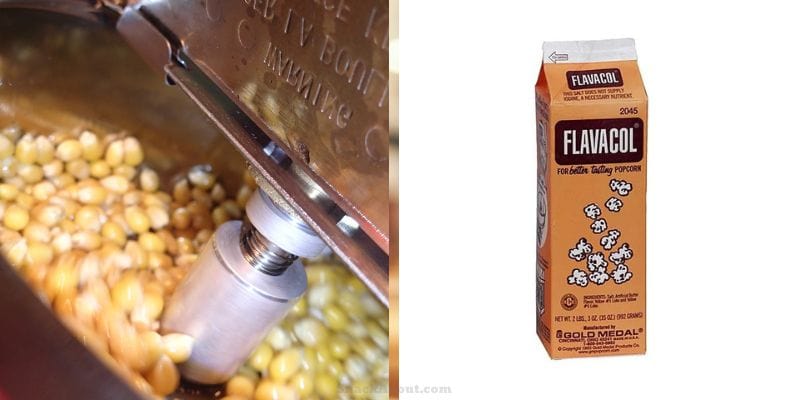Contents
- How many types of popcorn are there?
- What are some different types of popcorn makers?
- What is the difference between gourmet popcorn and regular popcorn
- What type of corn kernels are used for popcorn?
- What is the difference between kettle corn and popcorn?
- What kind of popcorn do movie theaters use?
- Is popcorn a healthy snack?
How many types of popcorn are there?
Officially there are six types of corn used for everything from animal feed to baking to producing ethanol for fuel and hand sanitizer. Of these six types, only one, Zea Mays is used for popcorn.
Once heated, kernels explode inside out to give us popcorn due to its hard shell and internal moisture level.
However, within this one type of corn, there are two different types distinguished by shape; butterfly and mushroom.
- Butterfly-shaped popcorn is similar to a snowflake, as no two pieces of butterfly popcorn are alike. Butterfly-shaped popcorn is light and crispy though not as strong as its mushroom counterpart,
- Mushroom popcorn is a bit different in that when popped the shape is round with a rough texture and sturdier structure.
What is the difference between corn kernels and popcorn?
As mentioned earlier, there is only one type of corn, Zea mays, suitable to be used for popcorn. Corn kernels are usually roundish or oval in appearance and have a hard outer shell that traps the corn material & moisture inside.
The Zea mays type of kernel is non-porous (it doesn’t have pores or tiny holes in its outer skin) and therefore moisture stays inside if it’s not planted or popped.
Because of this, heating up this type of means the moisture trapped inside builds up like steam, bursting through the outside layer and creating popcorn as it does. The trapped moisture is released as steam much like when you open a bag of microwave popcorn freshly popped.
The end result of popping the kernels is a whitish (or yellowish or other, depending on the type) soft and crunchy material that extends outward similar to a flower. This is the result and what we enjoy eating as a snack treat.
The different types of popcorn
White Popcorn
White popcorn (including baby white and medium white) has a sweet flavor many people enjoy. As far as texture is concerned, white popcorn has a lighter crunch and texture than yellow or other colored popcorn kernels.
While white popcorn kernels are smaller, there’s really very little difference between it and yellow corn.
Butterfly popcorn
While more of a shape than a type (and has no bearing on flavor), butterfly popcorn is popular because its irregular shape allows it to hold on to more flavor and ingredients. It’s also light and fluffy, making it very pleasant to eat and crunch on.
The image of butterfly popcorn is likely what your brain pictures when you hear the term popcorn. That really makes sense as it’s the most common shape of popcorn sold everywhere from movie theaters to sporting events.
Mushroom popcorn
On the other end of our popcorn spectrum is the mushroom-shaped popcorn. While butterfly and mushroom kernels look the same, the hull (shell) is more substantial as well as the popped product itself.
The shape and texture of this popped popcorn make it ideal for heavier toppings including (but not limited to):
- Caramel coating (like Cracker Jack treats)
- Chocolate
- Shredded cheeses
Since it’s a sturdier type of popcorn, it won’t break apart when mixed or and doesn’t tend to mix unevenly either. As you might expect, it has a more solid texture and holds its chew longer than butterfly popcorn.
Ladyfinger popcorn
This one’s known for its very small kernel (roughly one-half to one-third the size of a typical kernel) and taste similar to that of a white corn kernel. Ladyfinger is one of the most popular of the so-called hulless varieties of popcorn available.
It pairs so well with a light coat of butter, salt, and seasoning. Another advantage of ladyfinger popcorn is its light hull, perfect for those with sensitive teeth and others who hate having hulls getting stuck in their teeth.
Hulless popcorn
Hulless popcorn is simply a term used to describe a kernel with a very thin hull that is less tough than, say, a white corn kernel. It’s a very small kernel that reduces the frequency of hulls becoming stuck in teeth or braces.
It’s also easier to digest than kernels with stronger hulls, making it popular for popping at home too.
Colored: yellow, blue, red, and purple popcorn
Just as butterfly popcorn is the most common shape, yellow popcorn is the most common variety. When popped it has a yellowish hue, a stronger flavor, and a larger, tougher hull than the white variation.
- Blue popcorn pops white, is of average to a larger size when popped, and tastes sweet. Blue Popcorn is also healthy and known for having a high level of antioxidants.
- Red popcorn pops white as well. Because it’s harder to find, it’s more expensive and gets its reddish hue from the same compounds responsible for pigments in raspberries and red onions. Its kernels are small and fall into the hulless category. (Note: The flavor of red popcorn is said to be nutty and more popcorn-y than sweet on the flavor spectrum.)
- Purple popcorn comes from an area of South America within the Andes Mountains. The flavor is nutty, sweet, high in fiber, and packs more antioxidants than blueberries.
However, note that a lot of colored popcorn you find sold in stores is actually colored – it’s not naturally occurring. Typically artificial colors are added, although in a few cases some use natural ingredients for a similarly appealing style and even additional flavors.
What are some different types of popcorn makers?
Popcorn makers come in several different types. Although the ones that people grew up with such as using the stovetop with loose kernels get the job done, there are definitely better options these days!
- Microwave popcorn makers (microwave oven popcorn) in the 21st century are more than a bag, they’re an apparatus. Typically made from glass, silicon, or plastic and other materials, these poppers are popular amongst health-conscious people. You can also eat right out of them when it’s ready!
- Hot air popcorn makers use a built-in fan that blows hot air through a chamber that heats the kernels and forces them through to an area where the popcorn collects. This can be within the popcorn maker or a bowl or container below.
- Improvements to the stovetop method of popping corn have led to stovetop popcorn makers. Arguably the closest in taste to the flavor that movie theaters are known for, stovetop models use specialized pots made of stainless steel.
- Hot oil popcorn makers use an electric-powered heating element to heat oil and pop kernels once the oil heats them up enough. Some devices also have a small attachment that rotates to make sure the oil and kernels are spread for even heat & the best results.
- Electric kettle popcorn poppers (example: movie theater poppers and commercial models) use an electric heating element that heats kernels which usually fall into the the enclosed storage container. They’re then scooped out into bags for sale or for ready eating. You can even buy miniature versions for your home or special events!
To go all the way, a commercial or professional popcorn maker will provide the best popcorn popping experience. Built with stainless steel, glass, and a built-in heating system to keep the popcorn warm, there is nothing else on the market that compares.
One reason is that while smaller appliances can cook the kernels adequately, commercial or professional popcorn makers provide a lot more heat and don’t struggle to (or take as long to) make the kernels explode without burning the finished product.
What is the difference between gourmet popcorn and regular popcorn
It comes down to how the popcorn is processed. Additionally, the label “gourmet” often refers to higher-quality kernels with additional tasting coatings or colors that give it a unique & appealing flavor.
- Regular popcorn is mass-produced and typically uses more additives and preservatives.
- Regular store-bought products can also be limited in the flavors available, offering primarily salted, buttered, or cheese flavors.
- Gourmet popcorn comes in smaller batches, and the quality of the ingredients, starting with the kernels, is higher.
As a general rule of thumb, regular popcorn either has a no or a little bit of flavoring added and typically uses cheaper kernels which may have a smaller size. Gourmet popcorn may be sold as “organic”, used mushroom kernels of higher quality, and provide specialty flavors you can’t get otherwise.
Gourmet popcorn is also often sold in gift containers like tins around holidays such as Christmas or Thanksgiving for parties, holiday treats, or even as a gift.
What type of corn kernels are used for popcorn?
The only type of kernel used to make popcorn is Zea Mays as it has the type of non-porous kernel required. This allows the kernel to explode once the internal moisture reaches a critical pressure point, with the internal corn blowing outward to create the popped texture you can eat.
What is the difference between kettle corn and popcorn?
As the name suggests, kettle corn is cooked in a large oiled kettle made of iron, similar to kettle cooked potato chips and other snack foods.
When the popping has stopped, salt AND sugar are sprinkled onto the batch, giving it a one-of-a-kind flavor. In addition, kettle corn uses mushroom popcorn as opposed to butterfly popcorn to help the popcorn hold on to the salty and also sugary goodness added to it.
What kind of popcorn do movie theaters use?
Movie theaters use yellow kernels of the butterfly variety for medium-sized popcorn. However, what makes movie theater butter-type popcorn so enjoyable is the addition of special seasoning or butter salt. In many theaters the butter salt used is Flavacol.
Flavacol makes movie popcorn more enjoyable than homemade popcorn because its very fine texture sticks to the popcorn instead of falling off. You can also add it to the oil as you’re popping to improve the flavor and coverage without burning.
It’s more of a fine “flake” rather than granular salt. It’s very good, in case you’ve never enjoyed it, by the way!
What kind of popper do theaters use?
Since it’s a business, typical theaters use professional poppers of industrial strength and size. Popcorn is a big money maker for theaters and these machines cost thousands of dollars.
They’re also used nearly every day so they need to be robust and able to heat the kernels quickly to get the job done in large quantites.
Is popcorn a healthy snack?
Popcorn can be incredibly healthy if made the proper way with healthy ingredients. The stovetop is the best way to pop popcorn at home, using oils like coconut, olive, and grapeseed.
Limiting the amount of butter, salt, and other unhealthy toppings will also make a batch of popcorn healthier. Popcorn is a whole grain full of fiber and antioxidants, making it an ideal snack for the health-conscious when made properly.
It’s also a good low-calorie snack if you’re working on losing weight and want to avoid fatty or unhealthy meals.

